Updated April 7, 2024
What’s the deal with duct tape? Why is it on so many travellers’ packing lists? When I finally packed a small quantity, the many practical uses of duct tape when you travel became clear. The dangling straps on my bags were driving me crazy so I reached for the duct tape. A tear on another traveller’s bag was magically mended with the stuff. A loose hotel air vent cover rattled until it was suitably constrained. On a cycling trip, a bandage covering a nasty scrape was reinforced with duct tape. I grew to learn about the benefits of travelling with duct tape. Now, this versatile companion is a permanent fixture on my packing list.
Table of Contents
- Uses of duct tape when you travel
- 1. Repair clothing
- 2. Fashion a plug
- 3. Create a headlamp
- 4. Repair luggage
- 5. Use as a packing aid
- 6. Fashion a sling
- 7. Eliminate chafing
- 8. Repair broken electronics
- 9. Stabilize a sprain or broken bone
- 10. *Create makeshift plasters
- 11. *Prevent blisters
- 12. Remove splinters
- 13. Tame dangling straps
- 14. Repair a cracked water bottle
- 15. Construct cordage
- 16. Make eyeglasses serviceable
- 17. Make a dry bag
- 18. Construct a shelter
- 19. Execute repairs to a vehicle
- 20. Eliminate intrusive noise, light, and other irritants
- 21. Create ankle straps
- 22. Create labels
- 23. Repair a book
- 24. Create a RFID wallet
- 25. Reseal food containers
- 26. Cover a prominent logo
- 27. Announce your presence
- 28. Repair camping gear
- 29. Tape footwear
- 30. Remove lint
- 31. Hide valuables
- Travelling with duct tape
Uses of duct tape when you travel
For travellers, the uses of duct tape seem to be limitless. This post describes 30 practical ways to use duct tape on your travels.
1. Repair clothing
A tear in outerwear or rain gear can quickly reduce its functionality. Place a strip of tape inside the item with the adhesive side facing out. Carefully press both sides of the tear together. Then, press firmly on the tape so the original damage is hardly detectable. Check the strength of the repair. If reinforcement is needed, apply another piece of tape on the outside. When possible, replace the tape with a professional patch. Dropped hems can also be taped from the inside (and with any luck should survive a few washes). Because it’s waterproof, duct tape is perfect for repairing ski gloves. Transparent duct tape isn’t as evident as coloured tape.
2. Fashion a plug
Seal a drain without a sink stopper to do laundry. For best results, dry the area before applying the tape.
3. Create a headlamp
Create a hands-free solution by taping a flashlight to a hat or helmet.
4. Repair luggage
Reinforce luggage in worn areas, fix a broken hinge, cover a tear, stabilize a damaged wheel, or secure a luggage tag. To deter tampering, wrap tape around checked baggage. Position the zipper pulls under the tape. Or wrap distinctive tape around a bag’s handle. Colourful tape will make it easier to distinguish the bag from others on the luggage carousel or in the overhead locker. There’s a wide selection of colours and designs on the market.
5. Use as a packing aid
Tape unreliable tops of bottled liquids to prevent spills. Prevent leakage by taping a crack on a bottle of sunblock or shampoo. Use tape and bubble wrap to protect breakables. Tape a box for shipping items home.
6. Fashion a sling
Fold a length of tape down the centre so it is half the original width and no longer exposing the adhesive side. Tape a little padding to the sling for a more comfortable fit at key pressure points.
7. Eliminate chafing
If a backpack or child carrier begins chafing at the hip belt or shoulder straps, tape a piece of soft fabric to protect the susceptible areas.
8. Repair broken electronics
Apply strips of duct tape to a cracked or shattered body or screen of a smartphone, tablet, laptop, or camera. Tape a frayed charging cable.
9. Stabilize a sprain or broken bone
Immobilize a broken limb by taping it to a stick, tent pole, or other body part. Use padding. Don’t place duct tape on bare skin. Pad the junction of a forked branch with some cloth and duct tape to make a crutch.
10. *Create makeshift plasters
Craft a waterproof plaster to cover a blister or cut when it’s important to keep it protected from the elements. Create butterfly strips by cutting two small pieces of tape, and adding a smaller strip across their centres. Always place a sterile dressing over a wound before applying tape. If in a pinch, use a piece of clean absorbent clothing to protect the open wound.
11. *Prevent blisters
If prone to blisters, or when the symptoms of a developing blister first appear, cover the susceptible areas with duct tape. Clean the area and dry it thoroughly to give the adhesive the best chance to stick. Apply the tape as smoothly as possible. Finish by rolling on socks to avoid moving the tape out of place.
*Placing duct tape on bare skin can cut off oxygen to the skin’s pores. It also prevents sweat from being able to leave the body. This can result in the build up of toxins. The glue on duct tape can irritate the skin. Therefore, try to avoid applying duct tape directly on bare skin. Do so only if the consequences of not doing so could be more harmful. Carry plasters, a small roll of surgical tape and blister prevention tape in a small first-aid kit. They’re healthier alternatives.
12. Remove splinters
No tweezers? No problem, The adhesive power of duct tape may be enough to remove small splinters. Place a small amount of duct tape over the area and slowly peel away the tape. Apply again as necessary.
13. Tame dangling straps
Roll up excess webbing dangling from a backpack and secure the roll with duct tape. When you’re in a position to craft a better solution, pick up the web dominator, an amazing plastic clip that secures webbing with an elastic cord. See Effectively tame dangling straps with Web Dominator.
14. Repair a cracked water bottle
A leaking water bottle can be bad news when remaining hydrated is critical. A discarded water bottle is tough on the environment. Duct tape can prolong its life. The tape usually doesn’t adhere to wet surfaces, so empty the container and thoroughly dry the surface before attaching a patch. For extra reinforcement, completely wrap the water bottle in tape around the area of the leak.
15. Construct cordage
Attach an end of one of several lengths of tape to a fixed object. Twist to create a sturdy duct-tape rope.
16. Make eyeglasses serviceable
A broken pair of glasses can be taped until a proper repair is possible. For active adventures requiring a retainer strap, make one with duct-tape cordage.
17. Make a dry bag
Before I discovered the usefulness and sustainability of dry bags and reusable silicone bags, I made a swimsuit bag by reinforcing a zip-top bag with duct tape. It did the trick. After a morning swim in Singapore, I arrived home in Canada 18 hours later with my swimsuit, still damp, safely stowed in its DIY dry bag.
18. Construct a shelter
A few garbage bags take up very little space. The large orange ones used for collecting yard waste are durable and offer enhanced coverage and visibility. Make a poncho, ground sheet, tube tent, sleeping bag cover, survival shelter roof, or windbreak… with the help of some duct tape.
19. Execute repairs to a vehicle
Tape a rattling cupboard door when the latch or hinge fails in a camper van. Mend a broken awning. Stabilize a broken side mirror, bumper, or splash guard. Tape plastic to cover a broken window on a vehicle rental. Tape the trunk/boot closed after being rear-ended.
20. Eliminate intrusive noise, light, and other irritants
Tape the gap between curtains to shut out patches of light that interfere with sleep. Place a piece of tape over light-emitting sources. Tape the cover of an air conditioning unit that rattles during the night. Cover an air vent that’s letting in obtrusive smells or noise. Tape a tray table to the back of the seat in front of you when faced with a broken hinge. Seal a tear in mosquito netting or a screen door to lessen the risk of contracting mosquito-borne diseases. Ride out the rough weather on a cruise by stifling the opening and closing of closet doors and dresser drawers. Apply pieces of duct tape to the offending pieces of furniture.
21. Create ankle straps
Tighten pant legs at the ankles to keep footwear clean and dry inside. Prevent bugs or leeches from climbing up inside. Keep loose pants from interfering with a bicycle chain. Duct tape will do the trick but a better solution is to carry a couple of elasticized straps with velcro at each end. See Cruise dollar store aisles for travel products for a description.
22. Create labels
Some packing cubes all look the same. One solution to knowing what’s inside is to create labels using pieces of duct tape.
23. Repair a book
Reinforce the spine or dog-eared covers of a travel guide or journal.
24. Create a RFID wallet
Feeling creative? Fashion a wallet from duct tape using these step-by-step instructions.
25. Reseal food containers
Seal a bag with duct tape to maintain freshness, or to keep things leakproof. Create a makeshift lid for an opened can by placing pieces of tape across the opening.
26. Cover a prominent logo
Are you carrying expensive gear in a camera or electronics bag with a logo or branding? A piece of duct tape over the label might help deter theft. Some travellers cover expensive equipment with duct tape to make it as unattractive as possible to thieves.
27. Announce your presence
Blaze a trail or make a distress signal using brightly coloured or reflective duct tape. Travelling in the dark? Add a piece of reflective tape to your bag, bicycle, or clothing.
28. Repair camping gear
Apply tape over a ripped screen or broken zipper to keep bugs out. Repair a tear in a tent to keep it waterproof. Patch a torn sleeping bag to keep the insulation where it belongs. Use it to keep the ends of rope from fraying, or as a temporary fix of a leaking air mattress.
29. Tape footwear
Shoes stay dry longer when covered with strips of duct tape. Wrap duct tape around shoes when the glue attaching the sole gives out, or a sandal strap breaks. My friend Lynn Chen blogs at A heart in sharing travel tales. Duct tape enabled Lynn’s hiking boots to finish a trek in Patagonia.
Also, duct tape can be used to help boots retain more heat by wrapping tape around the insoles. The reflective surface of the tape helps reflect heat to preserve warmth.
30. Remove lint
With the adhesive side facing outwards, form a loop over your hand. Presto: lint brush. Tap lightly and the offending particles should stick to the tape.
31. Hide valuables
Tape valuables such as a passport, cash, and financial cards to the inside of clothing. Place them in a zip-top bag to keep them dry, and protected from damage from the tape. Make a pocket on the inside cover of a book for part of your emergency cash stash. Tape another part of your emergency cash stash to the inside of your bag using duct tape the same colour as the bag’s interior. Tape items under furniture, or in other hiding places.
Travelling with duct tape
How do you pack duct tape? For a long time, I resisted packing duct tape because I visualized the weight and space demands of a full roll of tape. Here are three approaches to packing a small amount of duct tape.
1. Make a key fob or flat pack
Here are the directions for making a cylindrical key fob of duct tape.
To make a flat pack, use a sturdy core such as a hotel key card, depleted gift card, or expired loyalty card. Make a hole in the card and attach a carabiner or lightweight cable.
2. Buy travel-sized duct tape
Or purchase a travel-ready roll or pocket-sized flat pack.
3. Use something in your bag
Another approach is to use something in your luggage as a wrapping core. Tent poles? Hiking poles? First-aid kit? Flashlight? Water bottle?
Given its ability to be used as a restraint, adhesive tape is a restricted item on some airlines. Carrying a small amount in these forms might pass the scrutiny of screening agents. It’s worked for me at screening checkpoints around the globe.
Might you be interested in these related posts?
If you found this post helpful, please share it by choosing one or more social media buttons. Have you travelled with duct tape? Have you discovered other uses not mentioned? Please share your thoughts in the comments.Thank you.
Pin for later?
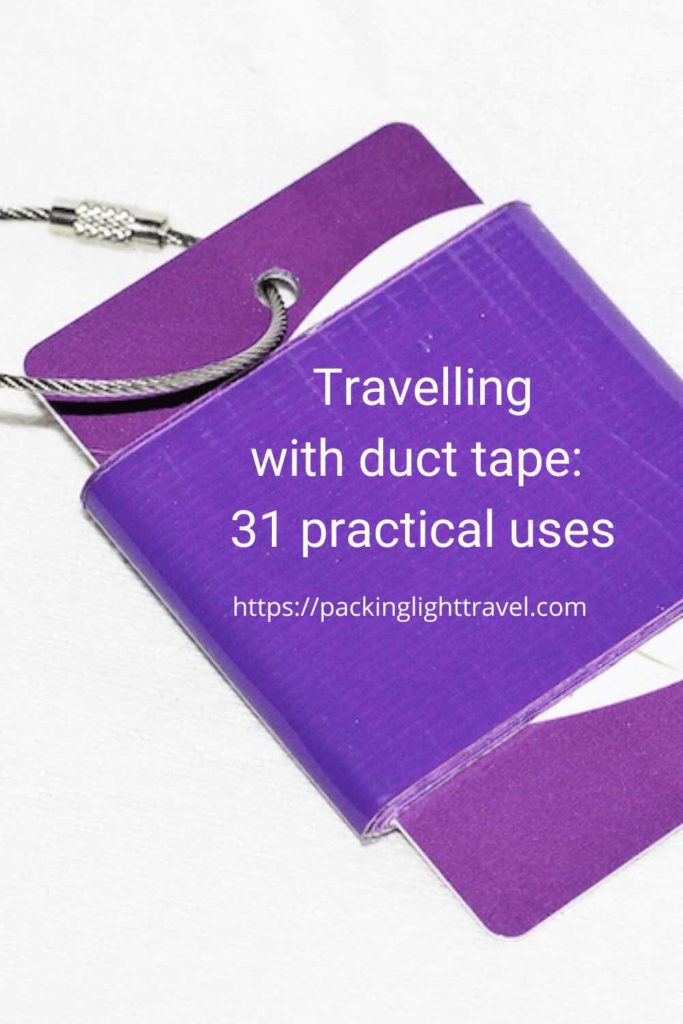
Photo credits from Flickr, Wikimedia Commons: phone (James Lee), car (Nicolas Nova), wallet (Quinn Norton)
Some of the links on this page are affiliate links. If you use them to buy something, you don’t pay more, but this website earns a small commission, which helps pay the costs of maintaining the site. Thank you for your support.



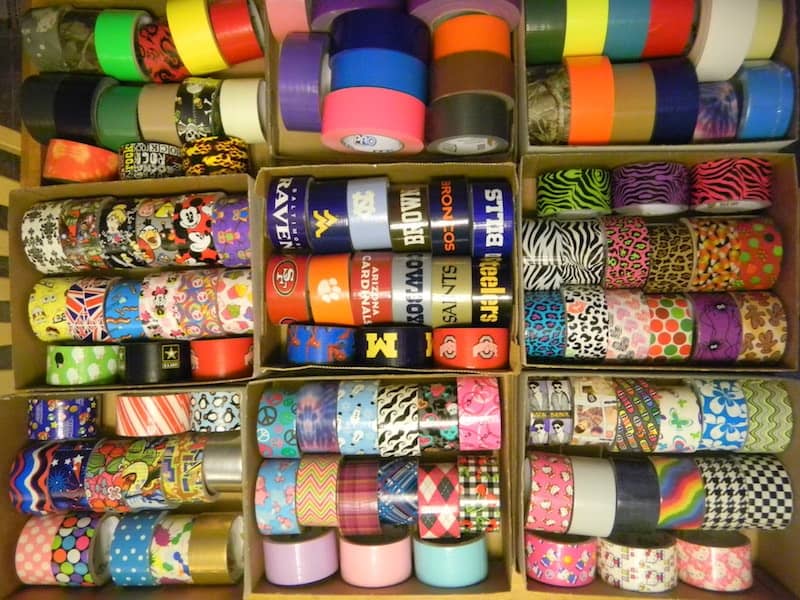
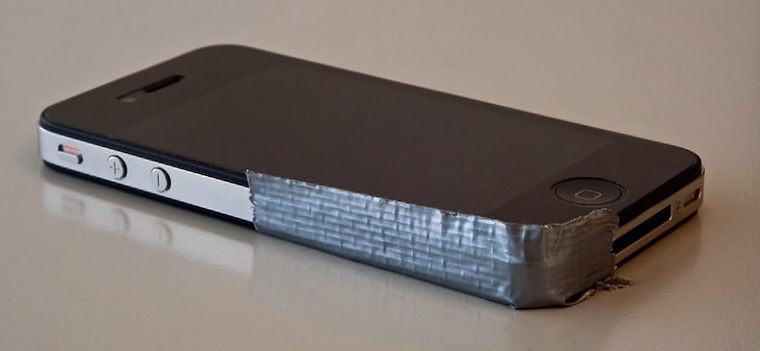
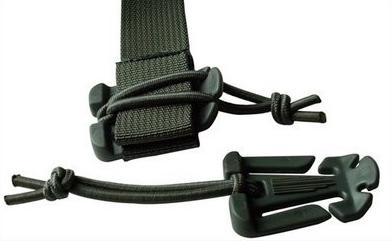
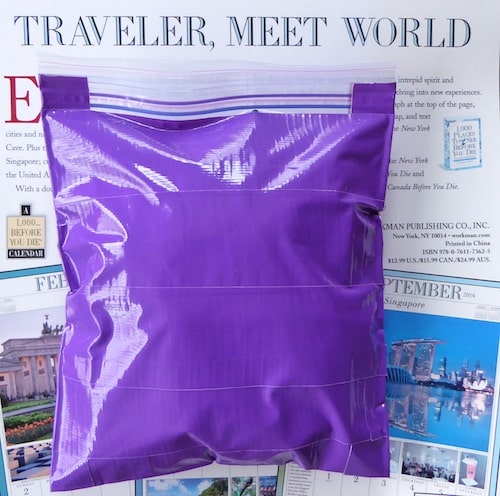

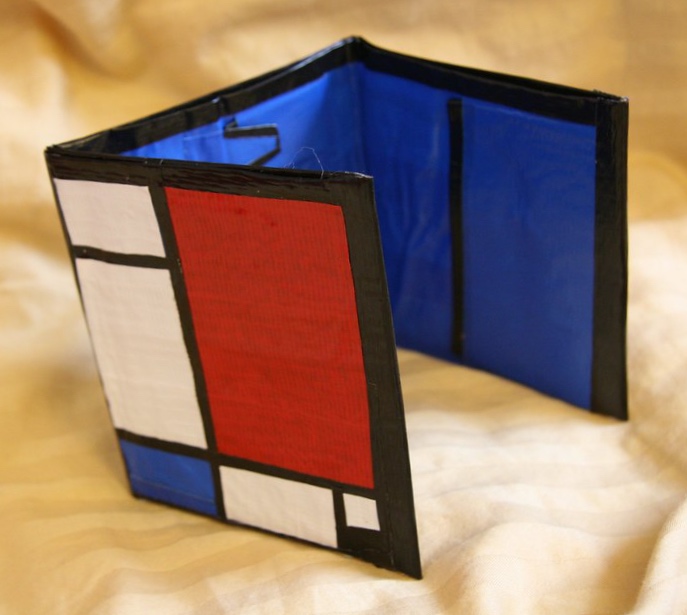

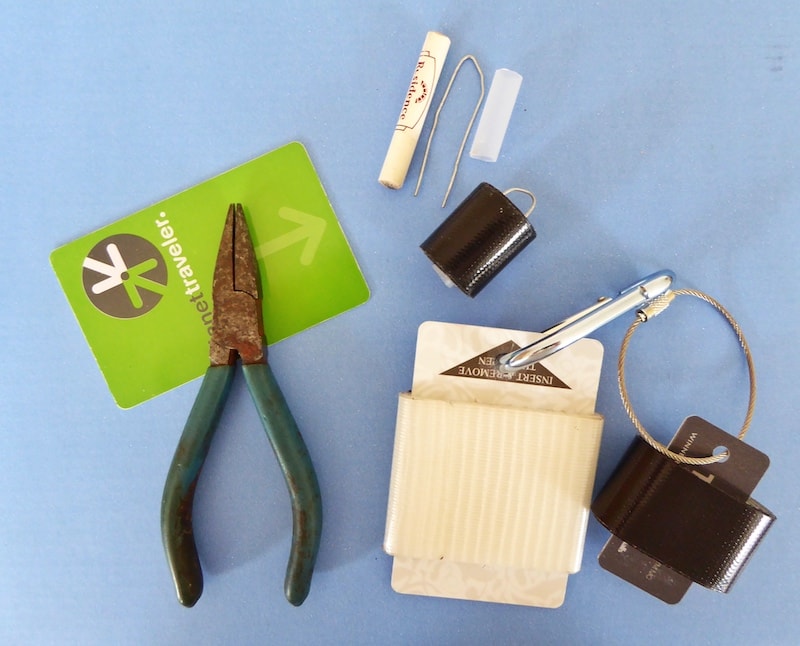
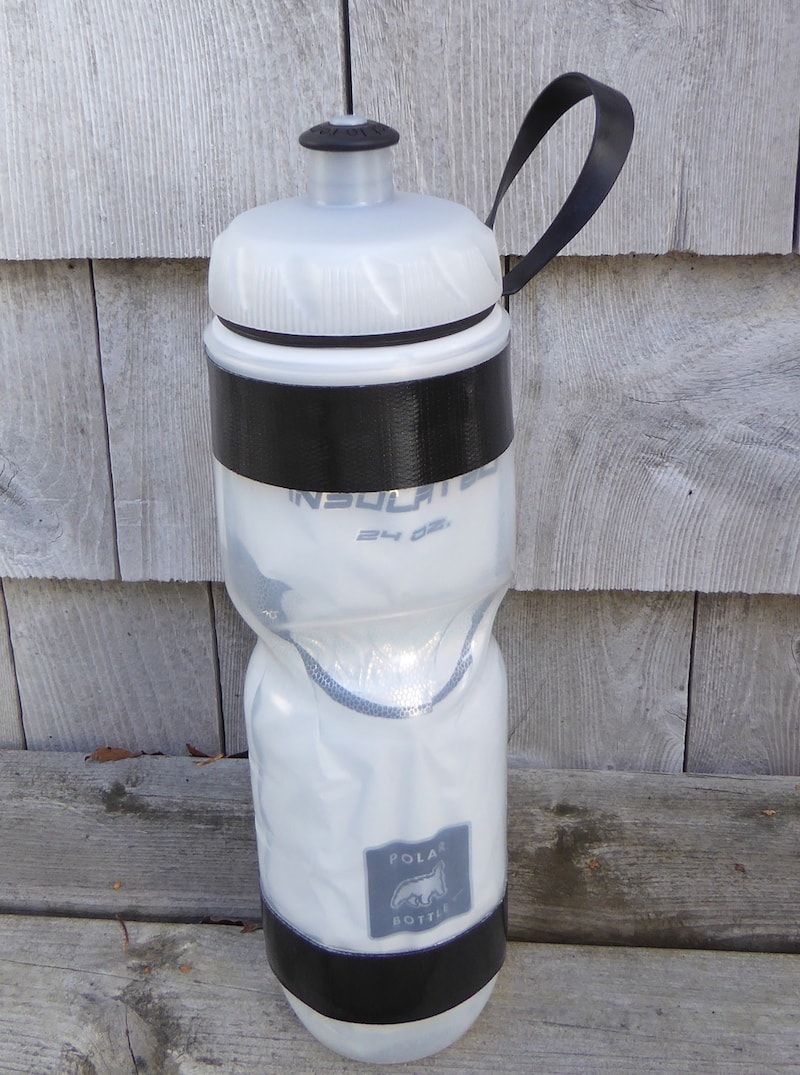




I love duct tape! I’m familiar with many of it’s uses, but your list goes beyond the limits of my imagination. I would like to add three camping-related examples to your fantastic list:
– repair a friend’s broken tent pole (Broken Group Islands 5 day kayaking trip off the coast of BC – the pole broke on day one so the duct tape was a life saver);
– attach a large tarp to a horizontal rope to provide a wind break during the middle of a terrific rain and windstorm (Haida Gwaii; the storm, and the duct tape, lasted 3 days);
– repair a crack on the bottom of a canoe (Fish Lake, Alberta; we dried off the canoe, applied duct tape to both sides, and went on to catch some delicious trout over the next 2 days).
Thanks for another great article!
If it moves and it shouldn’t: Duct/duck tape
If it doesn’t move and it should: WD-40
However don’t use duct tape on ventilation ducts: it eventually dries out and comes off. As one HVAC contractor once told me: duct is tape good for everything except ducts.
Luigi Zanasi recently posted…Borders, borders everywhere
I am currently using duct tape and a piece of cloth to create a nightlight out of a very bright ceiling lamp.
INSTRUCTIONS:
•Just tape the cloth with strips of tape to the ceiling to create a light barrier on one side of the lamp.
I taped it in a half-moon shape to get a little more coverage of shade.
•Be careful to not hang the cloth too close or completely over the lamp as lamps can get very hot! That would be a fire hazard!
I’ve also used duct tape to fashion a carry harness for a plastic drawer cabinet and so effectively turning it into a backpack.
This carried a 5-drawer cabinet including contents on public transport. Twice.
INSTRUCTIONS:
•Use four lengths of tape, two as long as you want your shoulder straps to be and the other two a lot longer. Stick them with the sticky sides against each other with the smallest strips in the middle of each one the biggest, then use the sticky parts to stick the straps to the top and bottom of your luggage like a backpack.
•Reinforce the tops and bottoms by placing more tape over the attachments where your shoulder straps stick to the luggage and tape a strip branching out to the left and right like a V-shape of the (now middle) attachment to prevent tearing of the tape at the point where the strap is stuck to the luggage.
TIPS:
•Remember that duct tape is strong in the length but tears easily over the width so don’t skip the last step, the tape will tend to tear over corners or tear loose over more rounded shapes. Strengthening the tape strap where it meets the luggage and placing more tape in a V- shape to the left and right helps maximize the sticky surface so it doesn’t come off under pressure.
•You can even stick a length of tape all around the luggage in a T-shape (the long end being where the straps attach and the short wrapping all around) if you’re carrying a heavy load that wants to tear the tape loose.
•If that still isn’t enough you can make the middle attachment points longer so the top and bottom ones meet in the middle.
I haven’t tried this yet but I would dare to rely on it if I needed to carry a big backpacking pack. The plastic cabinet was as big as my 60L backpack.
Thanks for the re-post. Great ideas for duct tape. Fascinating to learn about Gaffers tape as described in one of the links.
Great ideas for duct tape. Fascinating to learn more about these things. Thanks for sharing this post with us.
Woahh, I didn’t realize duct tape had so many uses! My shoes gave way when I was climbing Mount Kinabalu (highest mountain in Malaysia), I wish I had thought of bringing this then. Must get one soon. Thank you for these nifty tips!
This is so clever!!! I always carry a piece around a bottle, but I haven’t thought of the dozens of uses! I’ll need to add more and be more creative. I’m sure it could have helped in many situations already!
Coni recently posted…Does your place of birth determine who you are? A reflection on tourism, migration, and globalization
These are such clever ideas! I’ve never travelled with duct tape before but now I’m going to be carrying it everywhere! I would never have even considered more than half of these uses for duct tape – thanks for the really useful guide!
I didn’t know duct tape could come in so handy especially when traveling. I could’ve used it for some wardrobe malfunctions. I definitely need to pack a roll in my suitcase the next time I take a trip .
WOW — this was a creative list… but also very practical. I never would have thought of about 1/2 of these, like covering a logo on electronics! So smart.
This is a brilliant post. I hope the manufacturers of duct tape get in touch and offer you a lifetime supply because this will surely have increased their sales!
Ok, wow! I never thought about how important and helpful just having a roll of duct tape with me at all times could be. Great list!
Jamie recently posted…Free Camping and How To Find It
This is a splendid post. I trust the producers of channel tape connect and offer you a lifetime supply since this will doubtlessly have expanded their deals
The good thing about all the practical uses of the duct tape reviewed in this post is that they are DIY. Thanks for this insightful post.
Allgear Fred recently posted…BEST AFFORDABLE BINOCULARS FOR HUNTING
To put creams, suntan lotions, etc on your back this is what I do (using common duct tape that most people have at home): I take 2 long pieces of duct tape (you want the lengths to cover the area of your back plus an additional foot as you will use the ends as handles). I tape the 2 pieces of duct tape together and voilà! I put the cream on the duct tape and then by holding the 2 ends I move it back and forth over my back. The tape does not absorb the cream and it spreads well onto your skin. Then a quick wipe down and you can use it again.
I love your blog post for this kind of information, This is Informative as well.